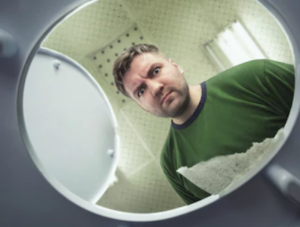You look in the toilet and see two distinct shades of yellow to your urine.
Maybe most of it is light yellow, but then there are patches of dark or brighter yellow.
How weird is this, you might wonder. After all, shouldn’t urine all be one color?
Next time you’re ready to pee, collect your urine in a clear plastic cup and see if the same thing happens: two different shades of yellow.
Chances are pretty high that you’ll see just one shade of yellow in the cup.
There are two possible explanations.
“Could be layering within the bladder,” says Michael Ingber, MD, board certified in urology, female pelvic medicine and reconstructive surgery, and founder of The Center for Specialized Women’s Health, division of Garden State Urology.
“For example, based on what they eat and hydration status over time, some urine may be less dense and a different color and can sit ‘above’ the rest in the bladder.
“It can do the same in the toilet too. We see this for example in people with bleeding polyps, where the initial urine stream may have a pink tinge, and later [in the stream] it clears (or vice versa).”
The second explanation is connected to the first, in that the water in the toilet bowl – due to its more expansive containment than a plastic cup – could “de-layer” the urine, revealing two different shades.
These explanations may sound like speculation – but that’s perfectly okay, because seeing two different shades of yellow in your urine is NOT a sign of any kind of medical condition. None.
Yellow urine is never a concerning sign.
“The color of the urine has to do with everything from your fluid hydration status, to what you eat, and how your kidneys are functioning,” says Dr. Ingber.
“People with high protein diets may notice a darker color to the urine as the presence of ketones rise.
“Those who drink three liters or more of fluid in the day may notice their urine is a more clear color.”
This clear color is sometimes described as pale or like ginger ale.
Dehydration can cause urine color to range from deep dark yellow to yellow-orange to orange.
“Others with microscopic amounts of blood may notice a tea color to their urine,” says Dr. Ingber.











































